Homemade Applesauce & Homemade Apple Butter (and why organic apples matter)
This post may contain affiliate links, including those from Amazon.com, which means we earn a small commission off your purchases. And here's the thing: We only mention services and products that we think are truly worth your attention, whether they're free, paid, or otherwise. This site relies on YOUR trust, so if we don't stand behind a product 110%, it's not mentioned. Period.
This is the season for apples and since I live in an apple-growing region, it seems apples are EVERYWHERE these days.
Of course, this is most welcome, as it allows me to make vast batches of homemade applesauce and apple butter, which – along with my favorite Fig Newton Butter – we will be enjoying – nay, savoring – throughout the winter.
Making homemade applesauce and homemade apple butter is superbly and blessedly simple. If you are able to use organic apples, it's even simpler, since you can just cut up the apples without coring or peeling and let the food mill take care of those items later. You won't want to do this, however, if you're using conventional apples.
Why not? you ask? Well, let's take a look….
Why Organic Apples Matter
Apples are the single most consistently pesticide-laden produce item available at the grocery store and top the Environmental Working Group's Dirty Dozen produce list.
Better said, if you have to choose just one item from your grocery list to buy organic, make it apples.
Apples and apple trees can be sprayed upwards of 24 times through a growing season with up to 48 different pesticides and insecticides. This means the apples not only have the pesticides on their skins, but have taken up those chemicals through their roots, buds, and stems throughout their entire growth cycle, so the pesticides are in the seeds, the flesh, and the skin. Thus, when you wash an apple (which you should do, regardless), you're merely skimming the surface of ridding the food of its chemical load.
I wish I wish I wish I could find a quote that my husband heard in a live conference a few years ago. The head of the apple board in a certain growing area was asked if he gives apples to his kids to eat and if they eat the skin. He looked somewhat stunned and replied (my paraphrase, obviously), “Goodness, no. The peel is just the packaging.”
Which is incredibly disturbing on a number of levels, but MOSTLY because the peel – like many citrus fruits, as well – contains a treasure store of beneficial enzymes, phytochemicals, and vitamins, including quercetin (benefits memory and lung function), ursolic acid (thought to increase the body's metabolic rate), as well as higher levels of Vitamins C & A. (Source 1 [PDF], Source 2, Source 3)
And this isn't just about avoiding the harmful effects of pesticides. This is about getting the benefits of organic growing methods. According to one recent study, organic apple skins contain 15% more antioxidants than conventional apples, not because the chemical pesticides are out of the picture, but because typically organic growing methods encourage healthier soil, which means the apple trees uptake more nutrients from the soil and thus the fruit benefit from that bounty.
Now, before this gets all glowy about organic agriculture, about which I'm absolutely passionate, as you know, I should mention that organic apples are sprayed too, and often several times. My husband is often stymied when he's working at the farmer's market and customers ask him if the produce is spray-free: the accurate answer is “no,” but what consumers are really wanting to know is if it has chemical residue, so the appropriate answer is “yes.”
(Side bar: How would you answer after 50 customers have asked you the same question in the middle of a busy rush? Would you take the time to educate each one on how an organic farm deals with infestations? Or would you answer another way? That's an honest question – I'd love to hear your thoughts.)
Insects love organic orchards just as much as conventional, so unless you want deformed, wormy apples, the pests still need to be dealt with in some manner or another, organic or not. The difference is WHAT is being sprayed. In conventional orchards it's chemical pesticides, in organic orchards it ranges from neem oil to fixed copper to using other methods of integrated pest management.
And of course, this doesn't even touch the environmental impact that chemical pesticides produce (see a visual table), the impact those chemicals have on orchard and farm workers who are in regular contact with the various substances, the impact on nearby groundwater, or how chemical pesticides influence the lifecycles of bees and other pollinators.
Why You WANT the Seeds and Skins for Homemade Applesauce
Now, in the case of making homemade applesauce and apple butter, there's another benefit here to being able to use the peels and seeds.
Apple peels and apple seeds are a concentrated, natural source of pectin, which as we all know, helps jams and jellies gel. (Yay!)
The seeds and peels also provide extra antioxidants and help concentrate the flavor.
This, the texture and consistency of a homemade applesauce or apple butter made using the peels and seeds ends up with a smoother consistency and more “apple-y” flavor, which I definitely prefer.
And NO, you don't need to worry about amygdalin, the cyanide-producing enzyme present in apple seeds, stonefruit pits, and other pips. Amygdalin only presents a problem when a) you eat a large quantity of seeds RAW, b) you eat the seeds WITHOUT eating the fruit, and c) you eat them raw frequently. These seeds have been used in cooking jams, jellies, and butters for hundreds of years by multiple cultures, so including them in a long cooked recipe does not give me rise for concern. Obviously, if this bothers you, just core your apples first and then use the cores to make apple cider vinegar.
And most importantly…
Now, lastly: before we get to the yummy recipes, there's one more super-important thing to remember here:
If you don't have access to organic apples or aren't able to afford them right now, this article is NOT meant to make you feel guilty in ANY way whatsoever. By all means, still eat apples! They're nutritious and delicious, whether they're conventional or organic.
So eat them. Feed them to your children. Make pie and apple crisp and honey-caramel apples and applesauce and apple butter and revel in their deliciousness. Just file this info in the back of your mind and at each step of your journey, do the best you can and be joyful in it.
Homemade Applesauce & Homemade Apple Butter
Ingredients
For applesauce
- 4 lbs of apples, about 10-12 apples, quartered
- 1 cup of water
- 1 cinnamon stick
- 4 tablespoons lemon juice, optional
- ¼ cup evaporated cane sugar or sucanat, optional
Add any of these additional ingredients for apple butter (optional)
- 10-12 whole cloves
- 10 cardamom pods
- 1 star anise
- 10 allspice berries
Instructions
For applesauce
- Place the quartered apples into a large pot. Add the water and cinnamon, along with the lemon juice and sugar, if using.
- Bring to a boil over high heat, then reduce heat to low, cover the pot, and simmer for 20-60 minutes, until the apples are completely tender and cooked through. (This is a wide range because applesauce is very forgiving when it's on low heat.)
- Once the apples are soft, remove the pan from the heat and transfer the apples in batches into a food mill (removing the cinnamon stick as well). This will remove all the peels and seeds and leave you with a lovely textured applesauce. This is also a great way to include kids in the kitchen - grinding a food mill is one task all of my kids have loved doing whenever I give them a chance.
- If you don't have a food mill, you may also press them through a fine mesh sieve, but this will take much longer.
- As a third alternative, if you have peeled and cored the apples before they were cooked, you may place them in batches in a blender and pulse to create your desired texture.
- After creating the applesauce, you may adjust flavor by adding additional sugar, lemon juice, or spices, such as ground cinnamon or nutmeg.
- Store in an air-tight container in the refrigerator for up to one week, in the freezer for up to six months, or in a deep freeze for up to a year.
For apple butter
- Once the applesauce has been processed through the food mill and is smooth, rinse out the pot and return the applesauce to the pot.
- Place any additional spices you wish to use in a square of cheesecloth and tie into a sachet. Add to the applesauce.
- Place applesauce over low heat and cook, uncovered, until the applesauce has reduced by half, has darkened in color, and has thickened so that when it runs off a spoon it forms a ribbon on top of the apple butter in the pot, 2-3 hours. Stir occasionally through this process to keep the bottom from burning.
- Taste the apple butter about halfway through cooking and remove spices (if the spices are overwhelming) and add a bit of sugar (if too tart).
- If making a larger batch, account for a longer cook time.
Notes
- For making applesauce, use any apple that you would put in a pie, such as Granny Smith, Fuji, Gala, Honey Crisp, Gravenstein, Mcintosh, or Jonagold. The best flavor will come from a blend of apples rather than just one type. The use of sugar is optional - I usually *don't* use it unless the entire batch is made with tart apples. Also, if you use organic apples, don't worry about taking the time to peel or core them - just quarter them and toss them in the pot, then run the batch through a food mill at the end.
Homemade Applesauce Snack Cups
Rather than purchasing applesauce snack cups at the store, package up your homemade applesauce in small jars, such as these Weck ones or in cup-sized mason jars. If you're making applesauce for baby food, you could even use these 4-oz ones (LOVE these!) or add it to a reusable food pouch. If you leave at least 1 inch of space at the top, you can freeze these without problem.
However, if you want your homemade applesauce snack cups with the convenience to-go, admittedly glass is not the way to go. (Heh.) In that case, my colleague, Laura over at Heavenly Homemakers, has a brilliant solution for you. Click here to see how she makes her homemade applesauce portable for sports games, college dorms, and life on the road.
Happy applesaucing!



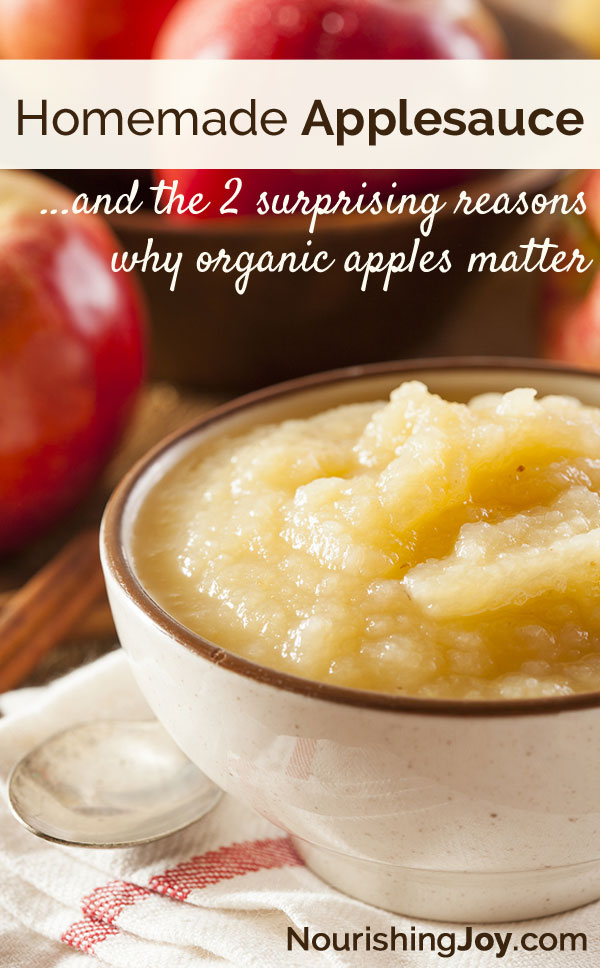
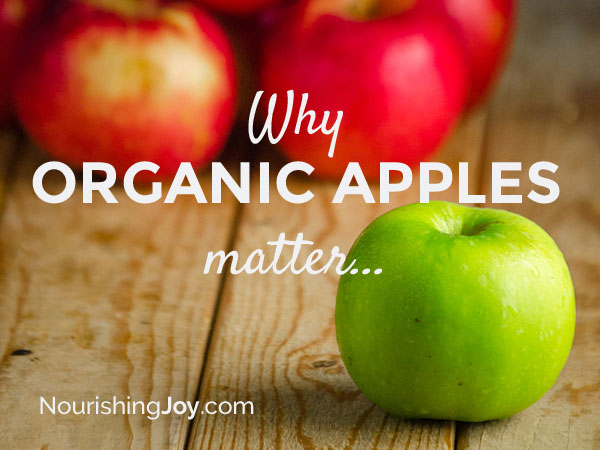
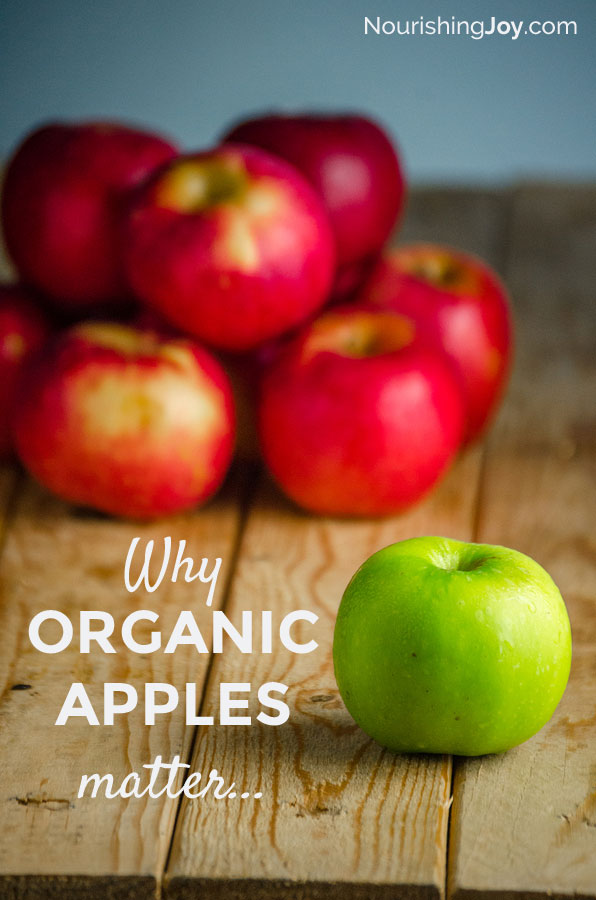
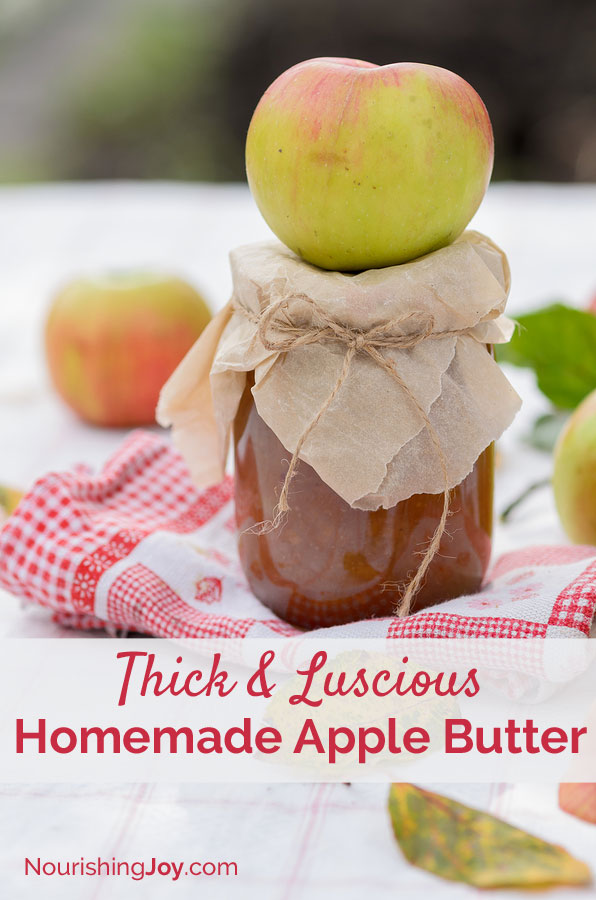
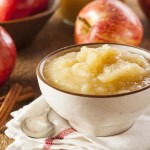
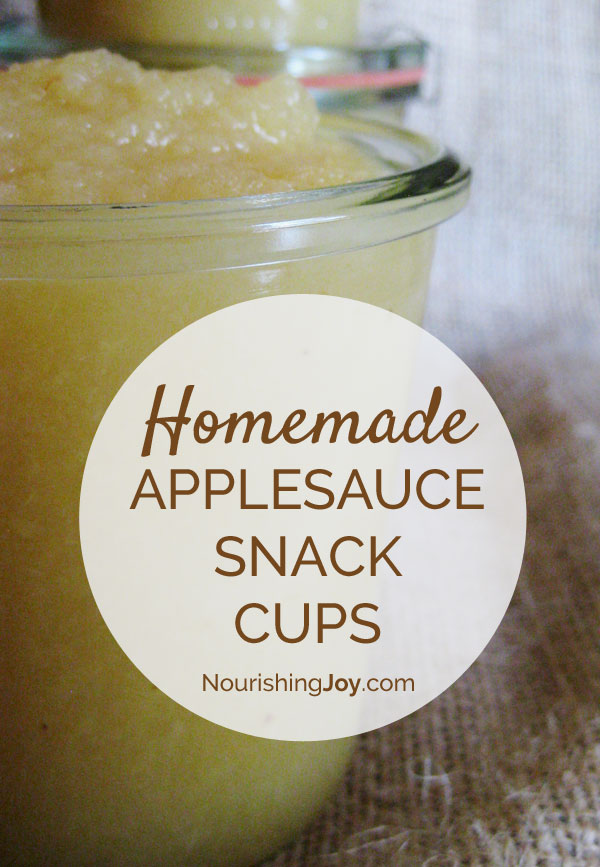
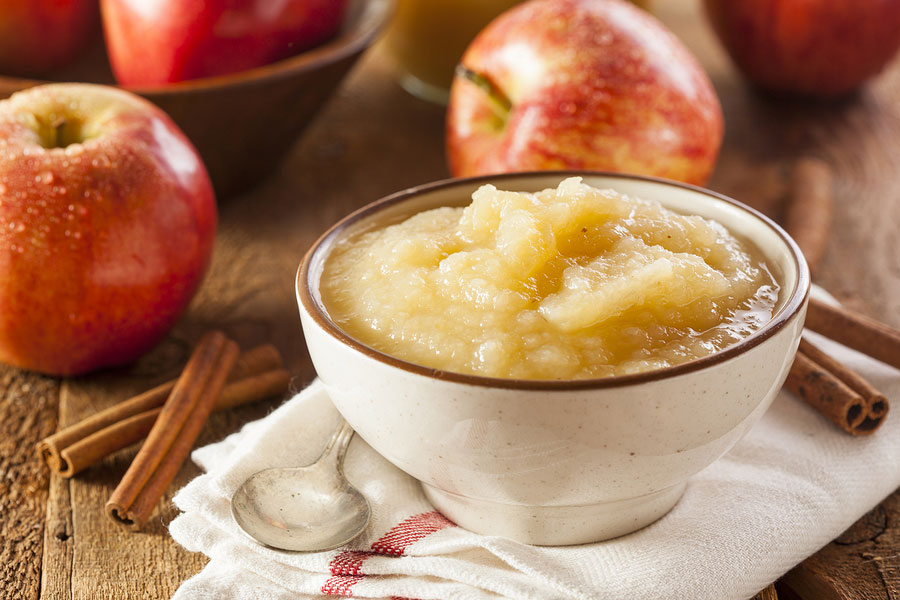


Thanks for sharing a link to my applesauce cup idea! Your recipes look so delicious!
Organic apples all the way! I always eat the core with my apples. Used to it by now. Apple seeds are also high in iodine, a mineral most Americans are deficient in.
I am new to this blog and I rarely comment on one but I wanted to thank you for your very informative articles and most especially for reminding us to just do the best we can. I have read rather extensively on the topic of good, real, whole food and sometimes it has caused me to feel somewhat paralyzed with anxiety over all the things. It is SO refreshing to read a blog that encourages us to do *our* best (which may be different from the person down the street due to finances, etc), informs us what the best is and then reminds us to find JOY in the doing. Thank you! Out of all the food blogs out there, yours has instantly become a favorite!
This looks GREAT! Can I do the quick ferment option with the apple butter the same as you do with the fig butter? Or applesauce? I would love to add the probiotics to a food my kids already love!!
Yes, absolutely! 🙂